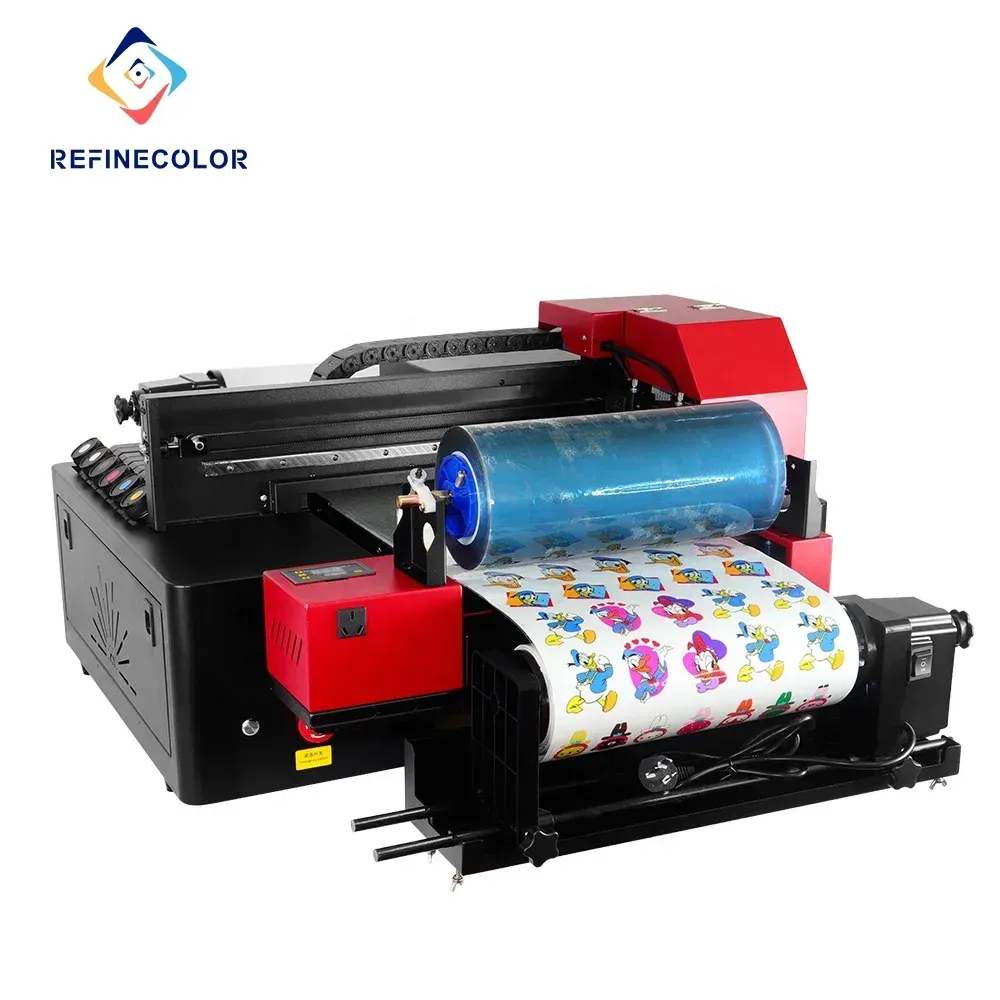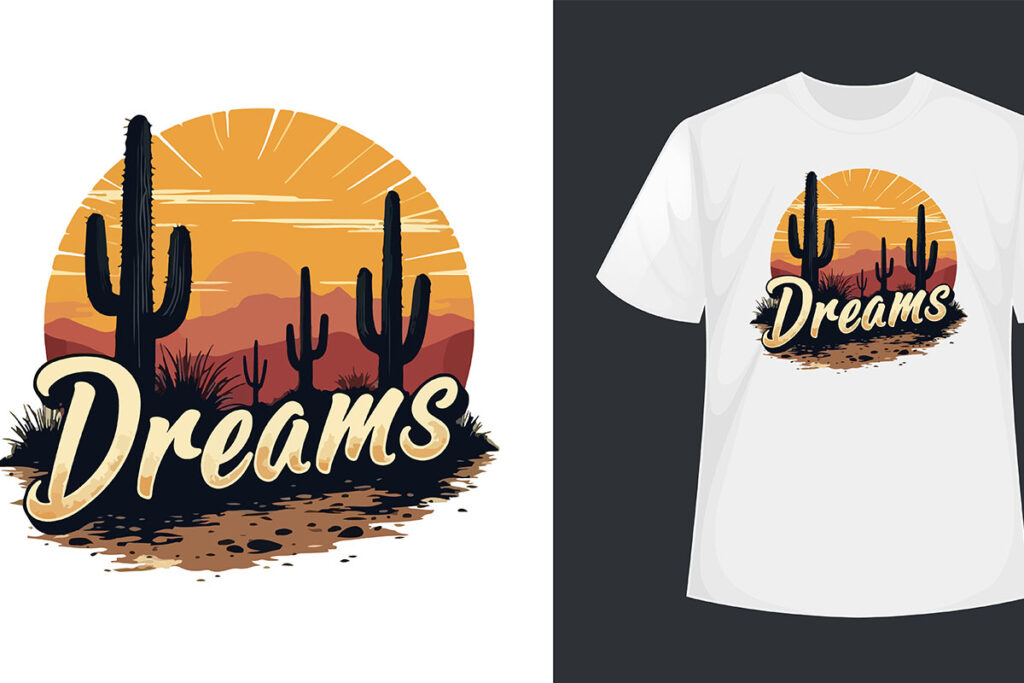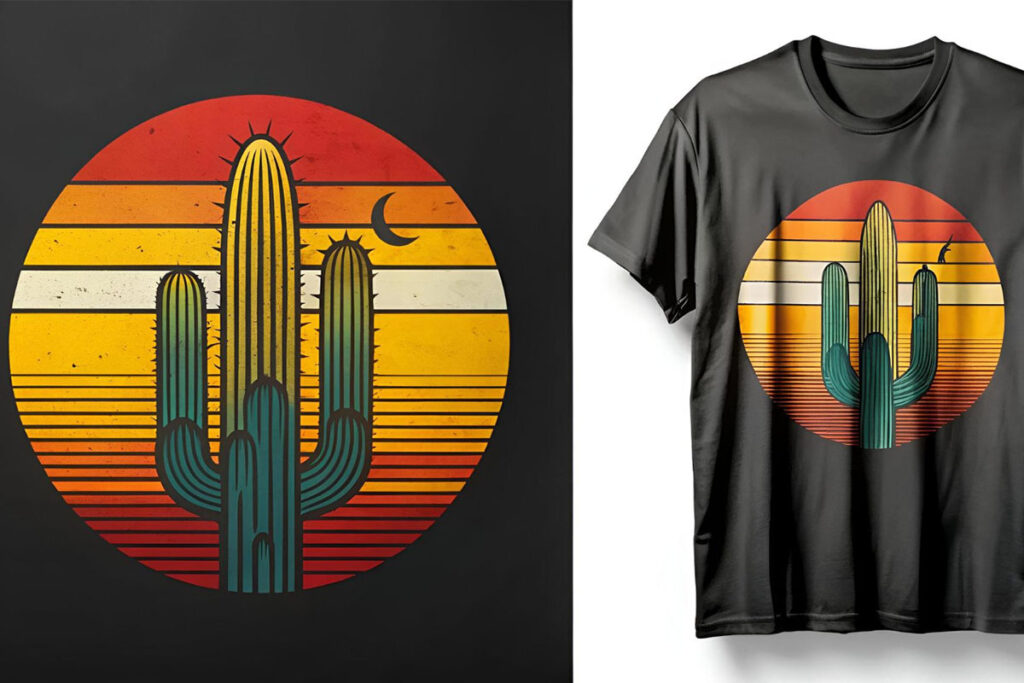In the realm of modern printing solutions, UV Direct-to-Film (DTF) technology stands out as a revolutionary advancement. By combining the capabilities of traditional direct-to-film printing with cutting-edge ultraviolet curing processes, UV DTF allows creators to print with incredible precision and vibrant colors on a wide array of surfaces. The benefits of UV DTF are far-reaching, offering exceptional durability, rapid drying times, and versatility that caters to various applications—from promotional materials to personalized gifts. Notably, innovations like the Mimaki UV DTF system are transforming the landscape of UV printing for creatives, enabling them to push the boundaries of design. Understanding how UV DTF works is crucial for anyone looking to tap into the future of printing technology and witness its transformative power firsthand.
Exploring the world of UV Direct-to-Film printing opens up a spectrum of opportunities for artists and businesses alike. This advanced printing method, often referred to as UV DTF, merges the efficiency of direct-to-film techniques with the rapid curing capabilities of ultraviolet light. As industry leaders continue to innovate in this space, users can reap the benefits of UV DTF in various creative endeavors, enhancing their projects with extraordinary detail and color vibrancy. Whether it’s personalized merchandise or high-quality signage, the applications are vast and varied, signaling a new era in the printing domain. By examining alternative terms and technologies surrounding UV DTF, we can better appreciate how it empowers creatives to elevate their designs.
What is UV Direct-to-Film Printing?
UV Direct-to-Film (DTF) printing is an innovative process that integrates ultraviolet curing technology with traditional direct-to-film methods. This combination allows for high-quality and vibrant prints on an array of substrates, including textiles, plastics, metals, and more. One of the key features of UV DTF is its ability to produce excellent color fidelity and intricate designs, which are particularly appealing in creative industries. By directly curing the ink onto the film, this technology eliminates the need for lengthy drying times, enhancing productivity and efficiency.
This cutting-edge printing technique is particularly beneficial for businesses aiming to offer customized products or promotional materials. The versatility of UV DTF allows for various applications, from personalized merchandise to signage and advertising materials. As the market continues to evolve, understanding UV DTF and its operational mechanics can provide important insights into how this technology can transform conventional printing methods.
The Advantages of UV DTF Technology
UV Direct-to-Film technology offers a multitude of benefits that make it a preferred choice in the printing industry. One of the most notable advantages is its versatility. Unlike traditional printing methods that are often limited to specific types of materials, UV DTF can print on a diverse range of surfaces, including fabrics, plastic, wood, and metal. This flexibility opens up a broad spectrum of creative possibilities, enabling businesses to cater to an extensive array of customer needs.
Moreover, UV DTF printers utilize UV-cured inks that provide enhanced durability compared to standard inks. These inks are resistant to scratching, fading, and even UV exposure, ensuring that the prints maintain their vibrancy over time. Customers can expect longevity in their printed products, making UV DTF an economical choice in the long run. Additionally, the eco-friendliness of this technology reduces the usage of volatile organic compounds (VOCs), aligning with modern sustainability efforts.
Recent Innovations in UV DTF Technology
The UV DTF landscape has witnessed significant advancements in recent years, particularly with companies like Mimaki leading the charge in innovation. Mimaki’s new UV DTF technology allows users to create high-quality stickers with only ink and varnish. This is a game-changer for businesses looking to print on complex-shaped surfaces without compromising quality. The unveiling of these innovations at major exhibitions reflects a growing interest in DTF solutions aimed at enhancing versatility in printing.
Moreover, the introduction of user-friendly devices like Anker’s UV Printer E1 has widened the accessibility of UV printing technology. Designed specifically for non-business users, this compact printer enables users to create intricate color designs on various mediums, such as cups and tiles. This democratization of advanced printing technology encourages more hobbyists and creative individuals to explore the possibilities of UV DTF in their projects.
Applications of UV DTF in Various Industries
UV DTF technology has found its niche across numerous industries due to its extensive application capabilities. In the world of signage and branding, businesses take advantage of UV printing to produce eye-catching banners, promotional displays, and custom materials that are sure to stand out. The ability to print high-resolution graphics directly onto diverse surfaces allows brands to maintain their unique identity while effectively marketing their products.
Additionally, UV DTF is increasingly used in personalized product manufacturing, meeting the demand for one-of-a-kind gifts and apparel. This technology enables businesses to offer customized printing solutions rapidly, benefiting from the swift turnaround times associated with UV curing processes. From custom merchandise to intricate design pieces, the applications of UV DTF continue to expand, proving essential for industries focused on creativity and personalization.
Getting Started with UV DTF Printing
As the UV DTF technology becomes more prevalent, beginners looking to enter this field can find everything they need to get started with a few manageable steps. Researching the fundamentals of UV DTF printing is crucial, encompassing an understanding of how the technology works, its application areas, and necessary equipment. Online tutorials, workshops, and manufacturer guides provide invaluable resources for newcomers exploring this exciting realm!
Once preliminary research is completed, investing in a quality UV DTF printer tailored to specific printing needs is the next step. Popular brands like Mimaki and Anker have established themselves as reliable sources of advanced printing equipment. Experimenting with different materials—such as fabrics, plastics, and metals—will allow operators to gauge how UV DTF interacts with each substrate, enabling them to make the necessary adjustments for optimal results.
The Future of UV Direct-to-Film Technology
The future of UV Direct-to-Film (DTF) technology appears bright as it continues to revolutionize the printing industry. With ongoing research and advancements in machinery and ink formulations, the scope of UV DTF will expand, allowing for even greater versatility and quality in printing applications. Companies are investing in innovative solutions to enhance user experience and printing capabilities, emphasizing the technology’s adaptability across various sectors.
Furthermore, as more industries recognize the benefits of using UV DTF printing—such as sustainability, efficiency, and quality—adoption rates will inevitably rise. With growing awareness of its applications, businesses focused on promoting their brand identity through high-quality, durable prints will increasingly turn to UV DTF. As the technology evolves, it will undoubtedly unlock new creative avenues for designers, manufacturers, and businesses alike.
Frequently Asked Questions
What is UV Direct-to-Film (DTF) technology and how does it work?
UV Direct-to-Film (DTF) technology is an innovative printing process that combines traditional DTF methods with ultraviolet (UV) curing. It allows for high-quality prints by directly applying ink onto a film and curing it instantly with UV light, resulting in vibrant colors and quick drying times on various surfaces.
What are the benefits of UV DTF printing compared to traditional printing methods?
The benefits of UV DTF printing include its versatility, allowing prints on diverse materials, superior durability due to UV-cured inks that are resistant to fading and scratches, high-resolution output with intricate designs, and eco-friendliness with reduced volatile organic compounds (VOCs) compared to conventional methods.
How does the recent Mimaki UV DTF innovation enhance printing capabilities?
Mimaki’s recent innovation in UV DTF technology improves printing versatility by enabling the creation of high-quality stickers utilizing just ink and varnish. This advancement allows for printing on complex-shaped surfaces, showcasing the technology’s adaptability for various applications.
What creative applications can UV printing for creatives involve?
UV printing for creatives provides the opportunity to print on a wide range of materials, producing custom items like apparel, personalized gifts, and intricate textures on surfaces. This technology fuels artistic expression by enabling unique designs and vibrant colors.
What industries benefit from the applications of UV DTF technology?
Industries such as signage and branding, personalized products, and industrial printing benefit significantly from UV DTF technology. It provides high-quality outputs for promotional materials, custom merchandise, and labeling for functional components.
What should beginners consider when getting started with UV DTF printing?
Beginners interested in UV DTF printing should research and train to understand the technology, invest in quality equipment from reputable brands like Mimaki, and experiment with various materials to learn how UV DTF interacts with different surfaces for optimal results.
| Key Point | Details |
|---|---|
| Understanding UV DTF | UV DTF combines direct-to-film printing with UV curing for high-quality prints on diverse materials. |
| Recent Developments | Innovations by Mimaki, Anker, and Eazydtf highlight improvements in versatility, accessibility, and capacity. |
| Advantages of UV DTF | Versatile, durable, high-quality, and environmentally friendly printing method. |
| Applications of UV DTF | Used in signage, personalization products, and industrial printing. |
| Getting Started | Research, invest in quality equipment, and experiment with materials to understand UV DTF. |
Summary
UV DTF technology is revolutionizing the printing industry with its blend of versatility, high quality, and innovation. By enabling prints on various surfaces and providing rapid drying times with vibrant colors, UV DTF is quickly becoming a coveted choice among businesses and hobbyists alike. As new advancements unfold, this technology offers endless creative possibilities, making it a vital asset for anyone in the field of printing. Embracing UV DTF will not only enhance print quality but also expand the range of creative applications available.



